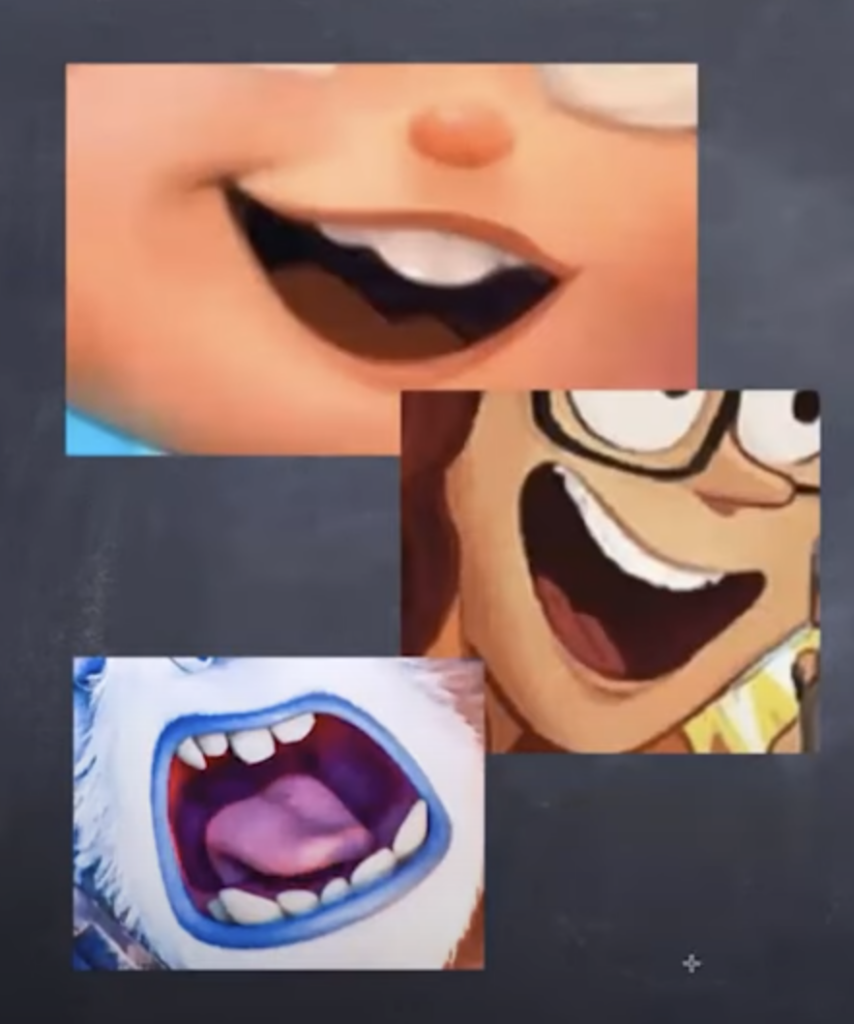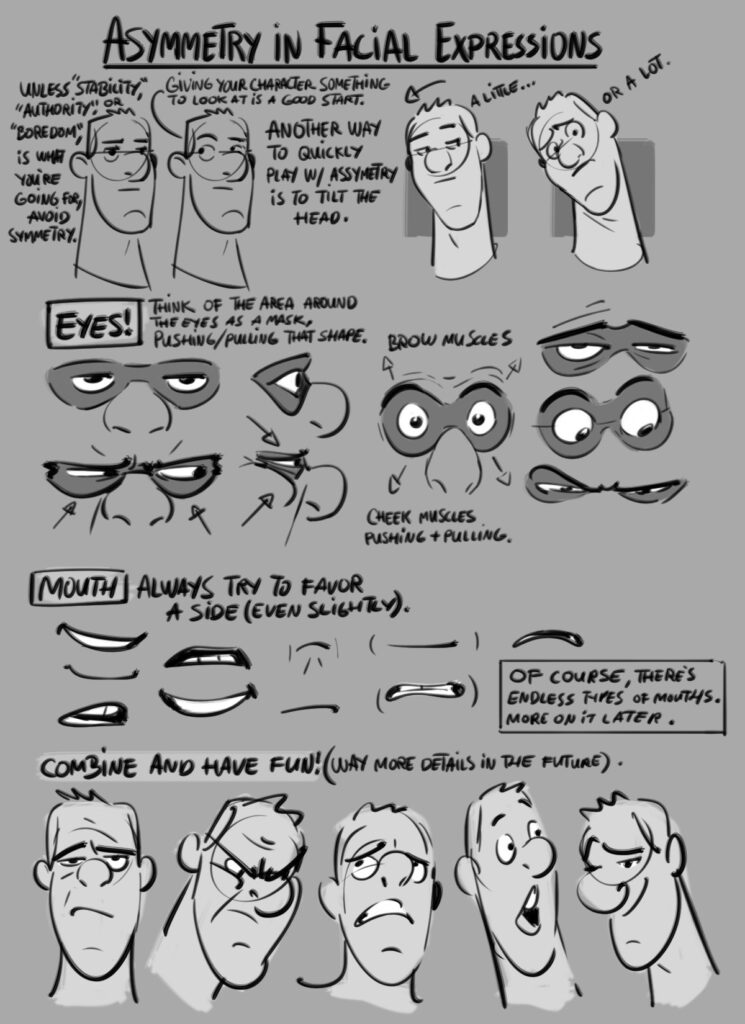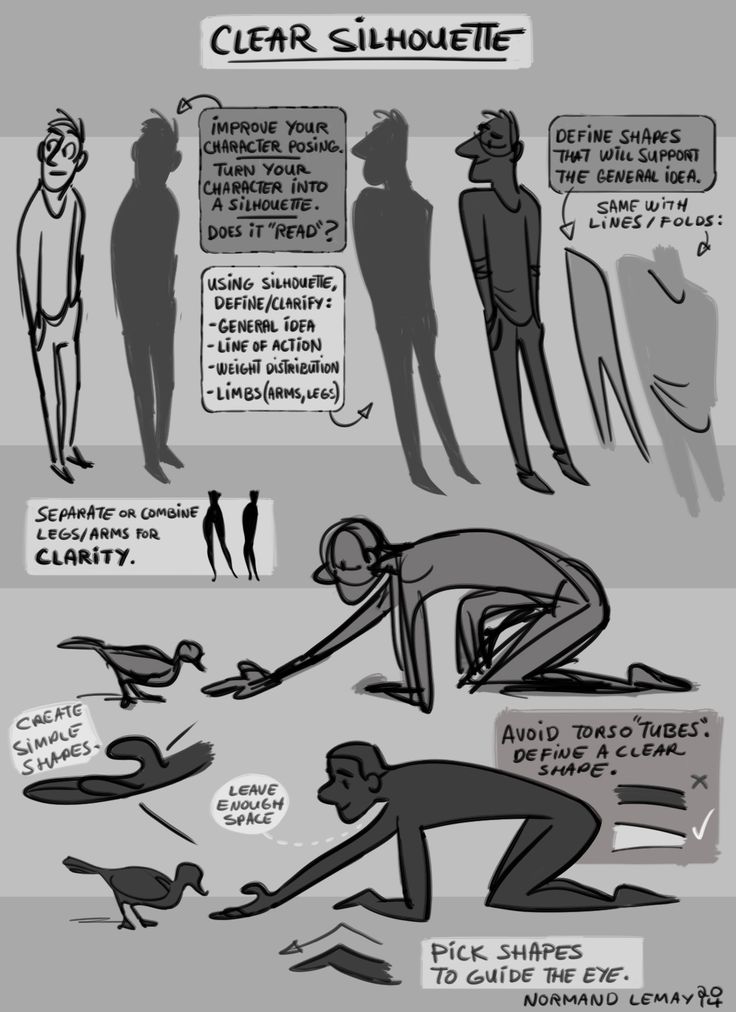
Whether you are animating a complicated Lip Sync or just posing a character to look their best, there are two details that are often overlooked: the teeth and the tongue.
When a character has their mouth closed, their teeth can be ignored. What about when they are smiling, laughing, crying, or any other open-mouthed emotion? That’s when the teeth come into play.
The answer is simple: don’t get caught up in 3D – take it back a step and think about what looks most appealing. AnimSchool instructor Rohini Kumar explains to approach it as a 2D drawing and think about the small details as a sketch artist would. By combining that perspective with the insight of an animator, you can create more appealing asymmetrical poses that not only look right, but feel right in motion.
Teeth
- Favor the upper teeth for a smiling or relaxed mouth, lower teeth can sometimes follow the opposite arc
- Shape the teeth to follow the curvature of the mouth/lips
- cheat the natural position of t he teeth
- Seeing the back teeth breaks appeal – rotate the upper teeth to hide the back
- Create symmetry between the shape of the teeth and the mouth corners
- Distance between the teeth lines should be similar
- In more subtle smiles, create appeal by converging the teeth and mouth corners

Tongue
- Very rare to open mouth and not see the tongue except in extreme angles
- More appealing to show the tongue than a black gap, but may depend on the shape of the sound
- Tongue helps to hit your lip-sync, especially when talking rapidly

Rohini explains to treat the tongue like a drawing, rather than a 3D object. Keep it simple – ensure that the curvature of the tongue is clear and that the viewer does not see any extraneous geometry at the base of the tongue, behind the tongue, etc. In a more relaxed position, the tongue can be “cheated” to sit back and tilted in the direction that the character is looking.

Additionally, consider when the tongue may be distracting from the overall animation – Rohini mentions that “N” and “S” sounds can often get away with not showing the front of the tongue flashing in and out to reduce distractions.
Watch the full snippet from an AnimSchool class lecture here:
At AnimSchool, we teach students who want to make 3D characters move and act. Our instructors are professionals at film and game animation studios like Dreamworks, Pixar, Sony Pictures, Blizzard & Disney. Get LIVE feedback on your Animation from the pros.
Learn more at https://animschool.edu/









